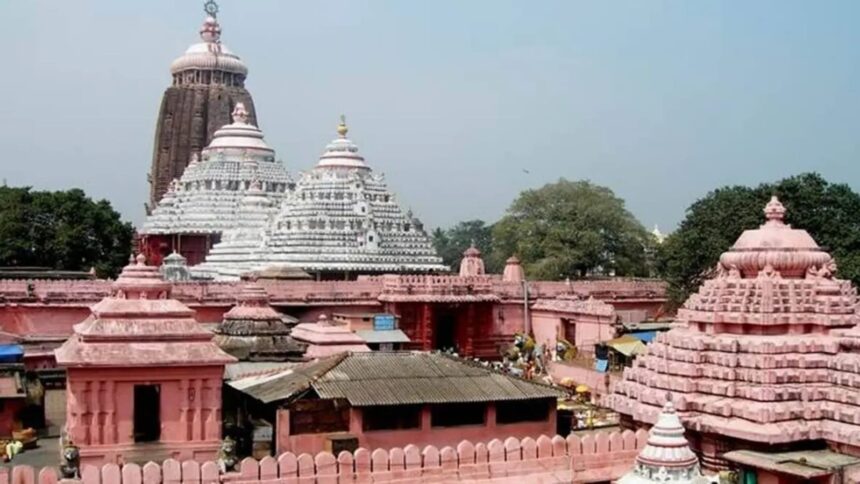TEN DAYS after he attended the inauguration of a Jagannath temple in West Bengal’s Digha, a senior servitor at the Puri Jagannath temple was on Sunday suspended by the temple authorities for a month for “demeaning the sanctity and dignity” of the 12th century shrine, one among the four dhams in Hinduism.
According to the suspension order issued by Shree Jagannath Temple Administration (SJTA) chief administrator Arabinda Padhee, Ramakrushna Dasmohapatra has been debarred from participating in any temple ritual and also from entering into temple premises for 30 days. Officials said the disciplinary action has been initiated as per the provisions of the Shri Jagannath Temple Act, 1955.
The order also warned against any attempt to influence or intimidate other servitors or individuals which will impact the rituals of the temple. If he makes any such attempt, the suspension period will be extended, according to the order. Instruction has also been issued to monitor his behaviour during the suspension period.
“The action has been initiated to ensure discipline in the Jagannath Temple. It’s the duty of everyone to uphold the sanctity of the shrine and traditions. Any kind of indiscipline will not be tolerated,” said Padhee.
Dasmohapatra, a senior servitor of Daitapati Nijog — the group that performs special rituals during the annual Rath Yatra — had participated in the inauguration of the Digha temple on April 30, and made some “contradictory statements” for which the SJTA had issued him a show-cause notice on May 4.
The senior servitor was asked to explain the allegations regarding his interview to the media in West Bengal in which he claimed to have provided idols for the new shrine that were made from the leftover wood from the Nabakalebara rituals held in 2015.
Nabakalebara is a sacred ritual in which the wooden idols of the sibling deities are replaced with new ones at the 12th century shrine. The ritual is performed at an interval of 12 or 19 years, coinciding with astronomical considerations.
As his claims triggered a row, Dasmohapatra later contradicted his statement, saying that the idols were not made of the leftover wood from the Nabakalebara ritual, and that he had supervised the crafting of the idols for the Digha temple.
An internal probe by the temple administration also found that no leftover wood from the Nabakalebara ritual was used for crafting idols for the Digha shrine.
“The contradictory statements created confusion among devotees of Lord Jagannath, hurt their sentiments and tarnished the dignity of the 12th century Puri Jagannath Temple,” said an official.
On May 9, the SJTA issued another show-cause to Dasmohapatra asking him to explain how, being a senior servitor, he participated in the consecration ceremony of the Digha temple despite it being named as “Jagannath Dham”.
Naming of the Digha temple as Jagannth Dham has triggered a row with Odisha Chief Minister Mohan Charan Majhi recently asking his West Bengal counterpart to reconsider the decision, saying that referring to the new shrine as Dham dilutes “Puri’s distinct heritage”.
Puri’s erstwhile royal and chairman of the Shree Jagannath Temple Managing Committee Dibyasingha Deb had also stated that referring to the Digha temple as a dham amounts to violation of “scriptural injunctions and long-established tradition”.








